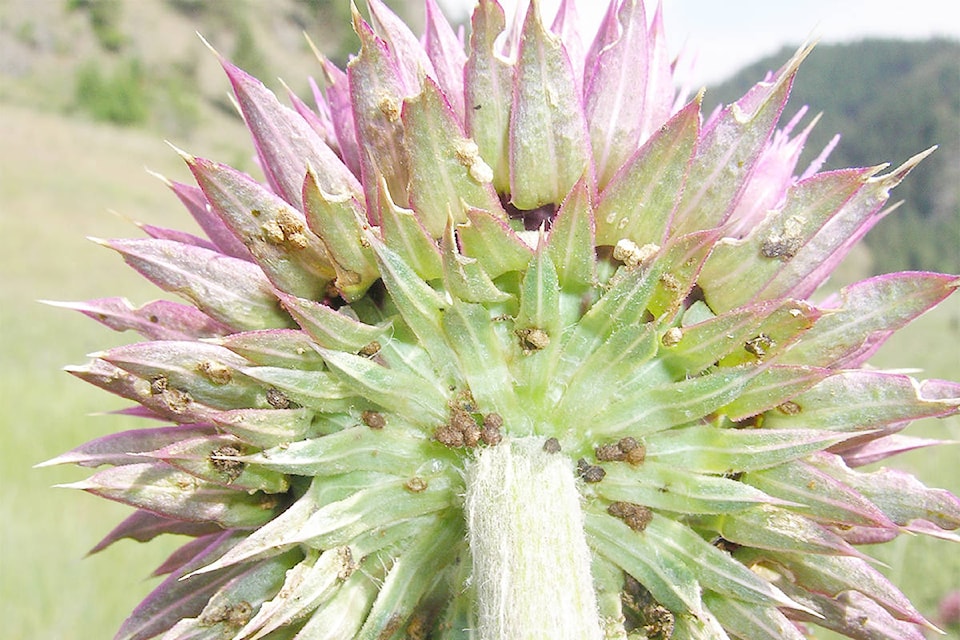Submitted to the Boundary Creek Times
Nodding thistle (Carduus nutans), also known as musk thistle, is a biennial tap-rooted thistle. It grows up to two metres tall. You can tell the difference between nodding thistle and other thistles by the stems and flower heads. Nodding thistle has a single flower head per stem and there are no leaves on the stem leading up to the head. At maturity the heads droop to a 90 to 120 degree angle. A single flower head can produce 1,200 seeds, with a single plant producing up to 120,000 seeds. The seeds are viable in the soil for around 10 years.
Luckily, there is some biological control for nodding thistle. We have a great little insect called Rhinocyllus conicus. This insect lays its eggs on the underside of the flower head. The larva burrows into the flower head and eats the seeds. We also have Larinus planus which also feeds on nodding thistle. This biological control helps to slow the spread of nodding thistle.
As part of the Cross Borders Project, the Boundary Invasive Species Society is working to keep nodding thistle from crossing into the United States. If you live along the border please assist us by controlling the nodding thistle along the border. If the back of the flower head has small, light brown spots then the larva are present. You can also crack open the flower head if you are not sure. If the flowers don’t have any larva in them, bag the flower heads and take them to the landfill. If the larva are present you can dig or pull up the plant and leave it on the ground to let the insects finish their lifecycle and emerge from the heads. If you come across any isolated patches of nodding thistle, no matter where you live, please dig or pull them out and check the flower heads. Be sure to wear gloves as the leaves are very spiny. Selective herbicide is also effective on nodding thistle. Our website (www.boundaryinvasives.com) has some great photos of biological control agents and how to tell if they are present.
For more information on invasive plants please contact the Boundary Invasive Species Society at 250-446-2232, boundaryinvasives@gmail.com, Facebook and our website.
